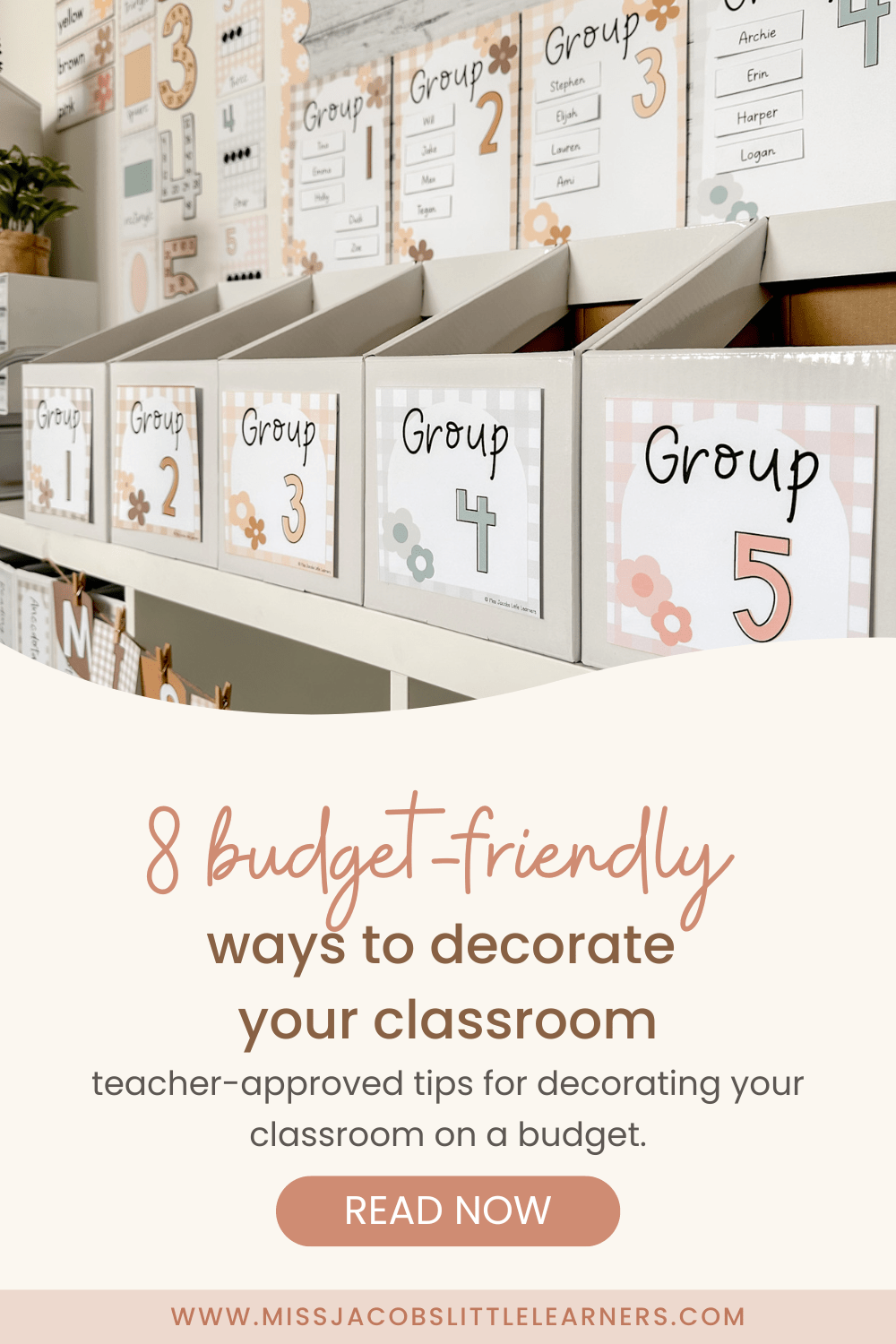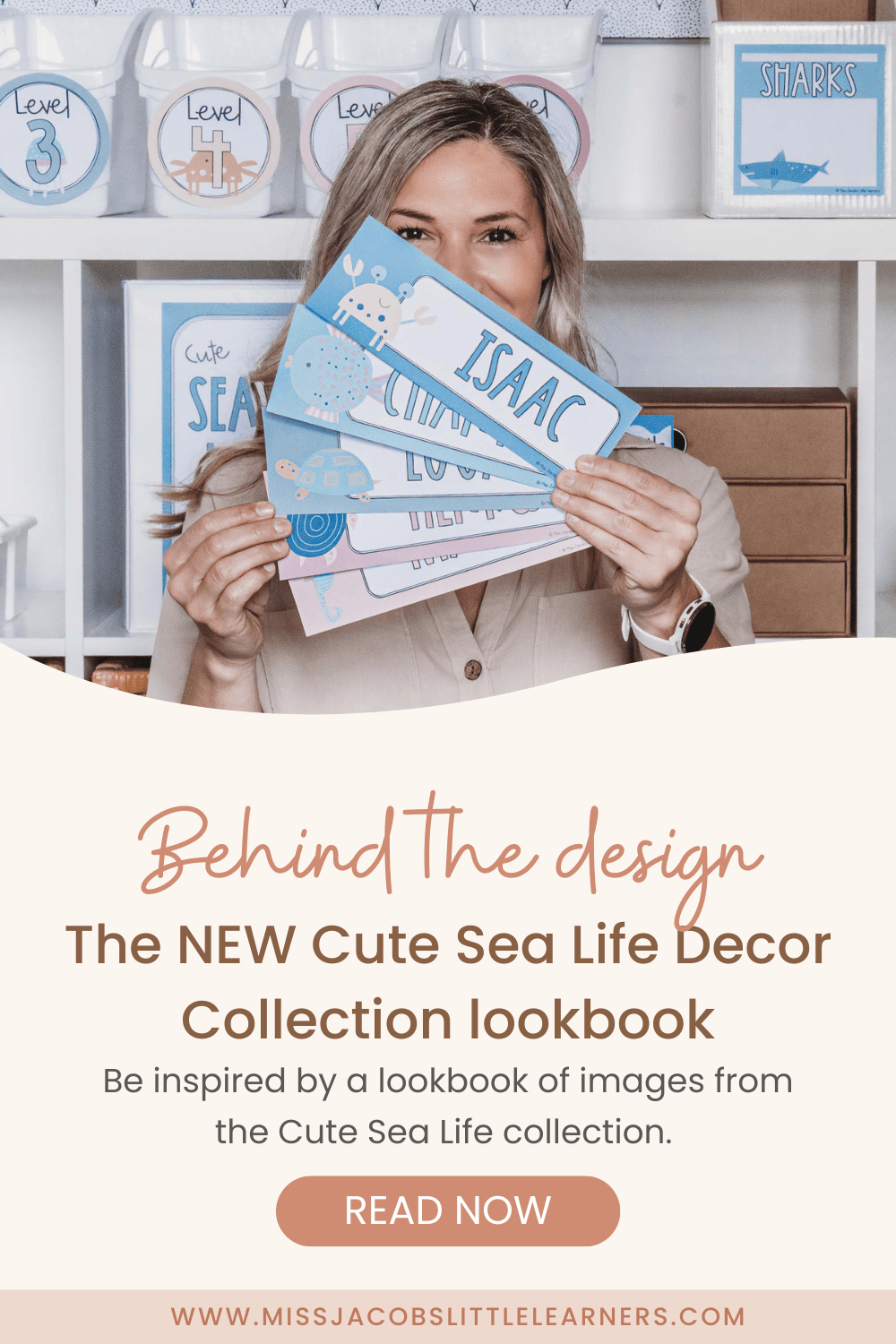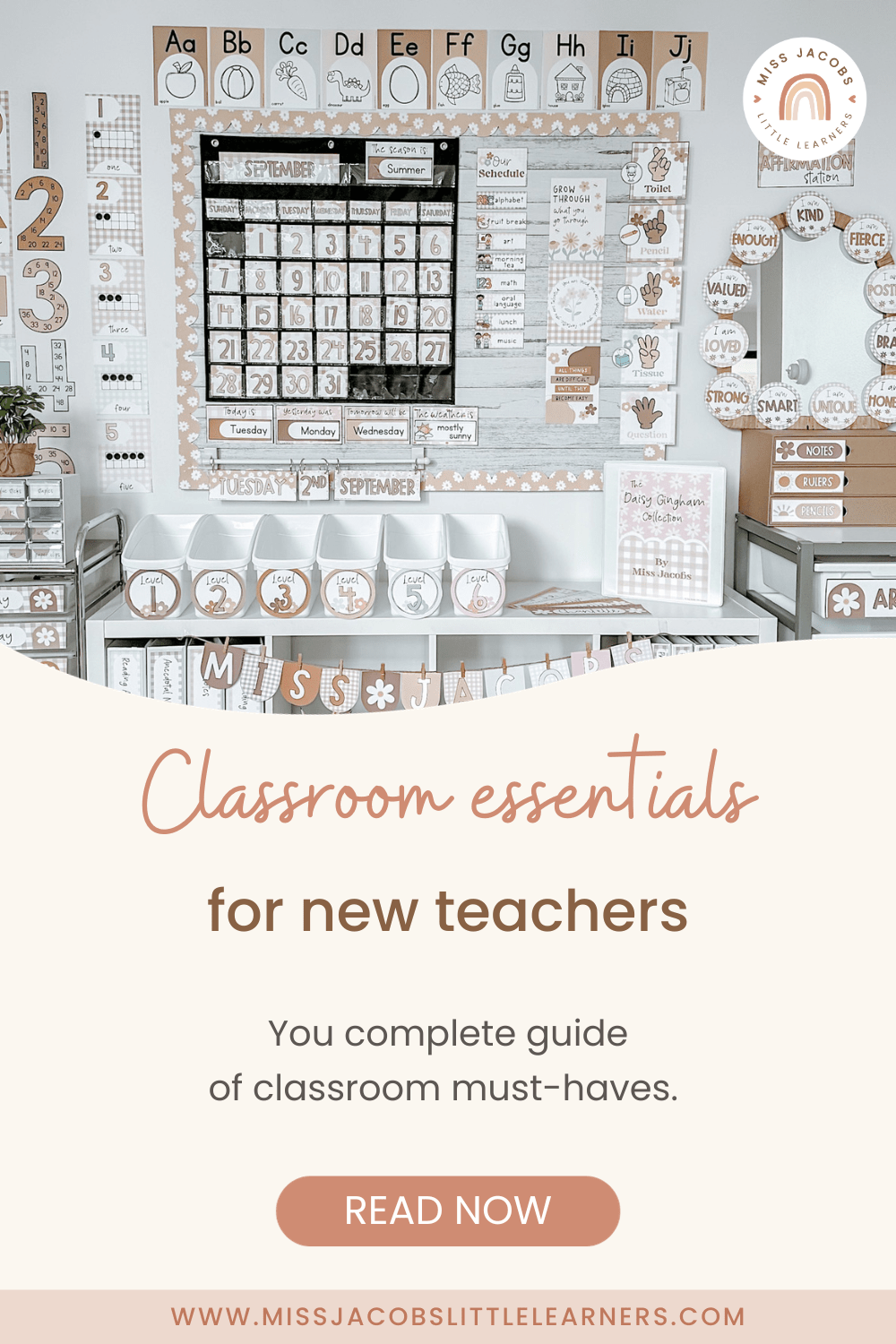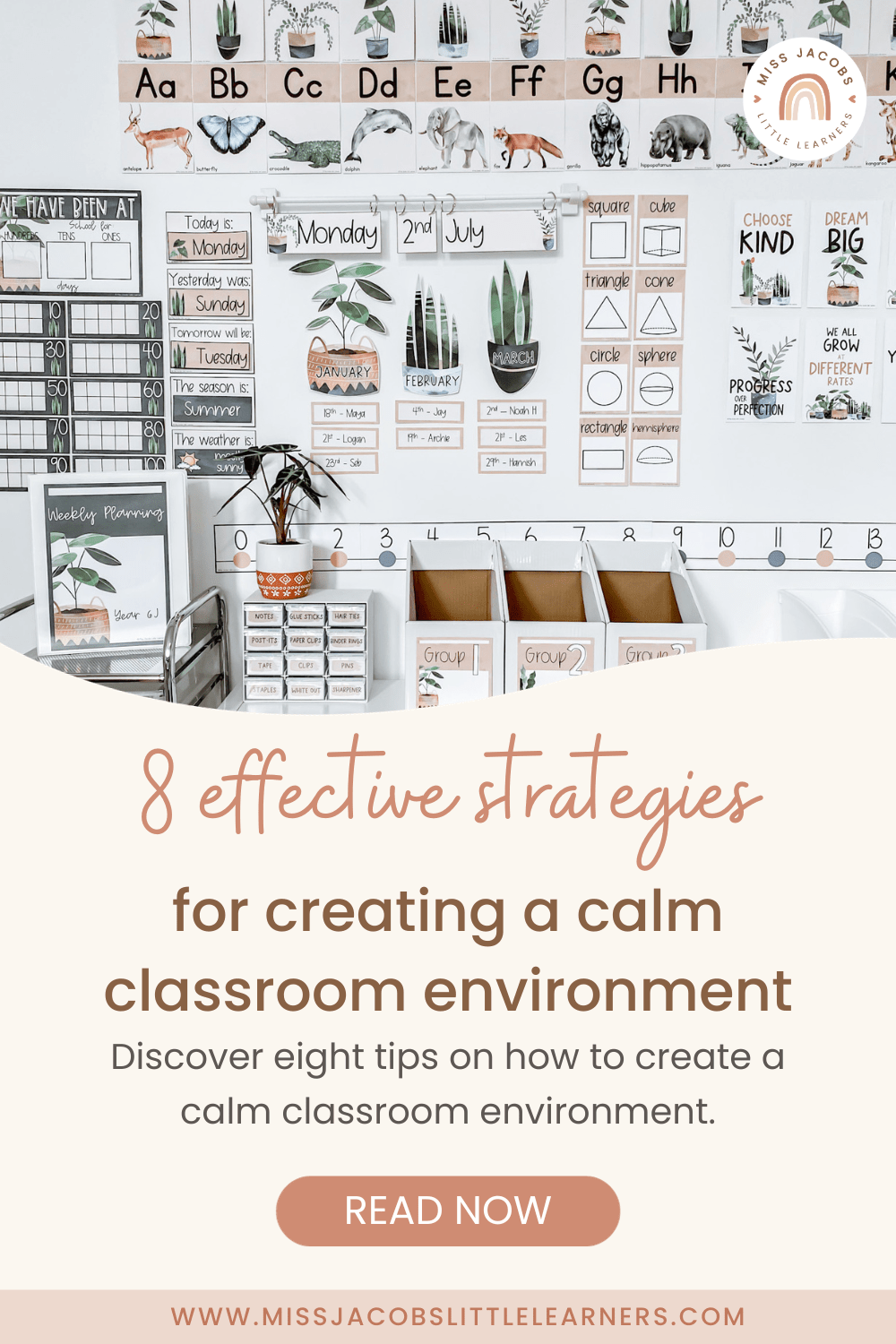
8 budget-friendly ways to decorate your classroom.
As educators, we’ve all been there, dipping into our own pockets to pick up those added extras for our classrooms. Creating a visually stimulating learning environment isn’t always easy when...
Bushfires, floods, drought, winds - in the last few years Australia has really felt the full force of climate change. And I know we’re not alone in that. It can be disheartening and even a little scary to think about the future our kiddos are facing when it comes to the environment.
But, whenever I’m feeling a little despair, I look for tangible actions to take. (The ol’ look for the helpers - response). So today I’ve rounded five simple tips for teaching sustainability in primary schools.
Like ah, absolutely everything, teaching sustainability starts with adopting the right mindset. And what is the ‘right’ mindset? I think it’s a blend of personal responsibility, practicality and optimism. It’s about seeing the issue as it is, taking steps to change it and feeling that no action is too small.
I don’t know about you BFFs, but I’ve always found this comes really naturally to kids. In fact, it’s one of my favourite things about them - they have HUGE hearts. And once they’re passionate about the planet, they’re tireless advocates - lecturing anyone who’ll listen about what they’ve learnt.

One of the biggest challenges we face as teachers is giving kids an age-appropriate understanding of complex, scary topics. Whether it’s a natural disaster or a tragedy, it can be really hard to know how to guide kids through. Never hesitate to seek help with this – always reach out to your school counsellor, chaplain, or trusted friend.
I’m a big believer that we shouldn’t shield kids entirely from the facts and the hard stuff, but we should also help them feel safe, hopeful and positive. Easy, right?!
The good news is, when it comes to teaching sustainability in primary schools, there are so many fun challenges and activities out there. They include:
A quick Michael Googlé will show all kinds of fun activities in your area, so get searching!
Blending the facts and the fun is a challenge, but it’s one worth aiming for. For example - you could start the year by having students use footprint calculators, then set challenges to reduce their ecological footprint throughout the year.

Of course, it’s unrealistic to think that teachers can do away with paper. Between worksheets and workbooks, it’s a staple of our everyday life.
But, there are some simple steps we can take to cut down on our paper usage.
Use Google Slides rather than handouts to set your tasks and agendas, if you’re lucky enough to have a big screen or digital whiteboard. All of my slides are fully editable so you can take them in any direction you wish.
Similarly, if your students have laptops, iPads or tablets - consider using them specifically to cut down on paper usage. Even the tiny things like emailing instructions (where appropriate) instead of handing out a worksheet really can add up.
And finally, while it’s not digital - you can also get creative with your writing surfaces. One of my favourite hacks is to use a whiteboard marker on a clear clipboard to make a reusable writing surface. Adding a little sticky tape to paper can do the same thing.
One of my favourite ways to teach sustainability in the classroom is through food, and there are limitless directions for this fruitful topic. (Pun intended, always).
There are so many hands-on activities you can do, here are some ideas:
The food-related options really are endless!
There’s heaps of pre-existing programs out there too - take a look at the Kitchen Garden Program by Stephanie Alexander, as a great example.
And of course, there’s plenty of items in the Miss Jacobs treasure chest that you use, including my:
Plus, if you want to set the eco-tone with your decor, I’ve also created a roundup of tips for creating a nature-themed classroom.

I know that the plastics involved in laminating can be seriously tough on the planet. And as someone who makes classroom decor for a living, this is an issue close to my heart!
But as a life-long laminator (a.k.a - a teacher), the ecological need to cut back *pains* me. (Okay, I’m exaggerating). (Slightly).
But seriously - where we can, we need to back away from the laminator. So here are some alternatives:

Of course BFFs, these tips aren’t going to solve the global issue of the climate crisis. But they will provide opportunities for students to understand sustainability issues, and they will show that every action matters.
If we can do a great job of encouraging students to care about the planet, they may take that passion into high school and beyond. I genuinely believe if we enrich our students' learning about the environment we can take a huge step toward creating a sustainable future.
The support is out there friends. There are so many wonderful teaching resources when it comes to environmental education and sustainability education.
Knowing how important our next generation is in this fight, everyone from the United Nations to local councils have created their own lesson plans and materials.
Even governments are coming to the party. There are grants available to build green schools, detailed programs for schools, and even professional development units for teachers. While I’ve linked to some local resources here, it only takes a tiny little searchin’ to find oodles of options.
So BFFs, I’d love to hear the ways you tackle this topic in your own classrooms. Make sure you tag me over on the ‘Gram, or the ‘Book (okay, no one calls Facebook The ‘Book) so we can continue teaching and learning together.


Teacher and Founder of Miss Jacobs Little Learners. If you’re dedicated to making a positive difference in the lives of your students – I’m here to help you.
Read MoreMiss Jacobs’ Little Teacher Community is a dedicated space for teachers just like you!
JOIN HERESign up as a Miss Jacobs BFF member today and get access to free resources!
sign up
As educators, we’ve all been there, dipping into our own pockets to pick up those added extras for our classrooms. Creating a visually stimulating learning environment isn’t always easy when...

Following the overwhelmingly positive response to the 'Cute Labels' collection (seriously you guys 🤩), your enthusiasm for a sea life theme couldn't be ignored. So, after some brainstorming and a...

Ahhh, to be a grad teacher again. There’s no feeling quite like walking into your very own classroom for the first time. The excitement, the nerves, the niggling sense of...

Have you ever walked into a classroom only to find your students fidgeting, interrupting, daydreaming, staring out the window, making paper planes, forgetting their inside voices and the stories that...